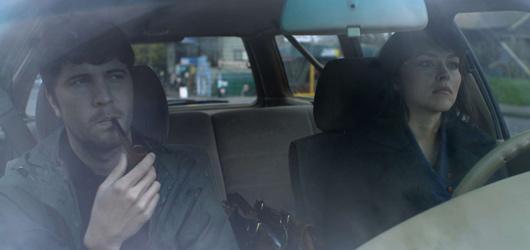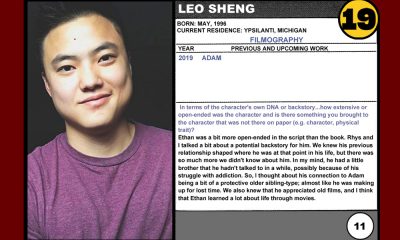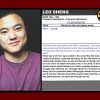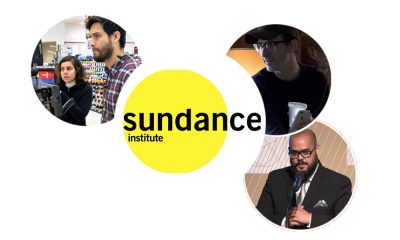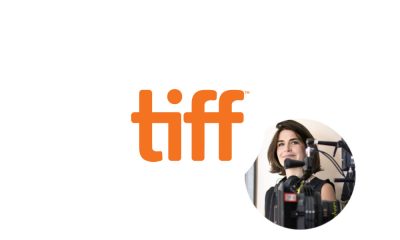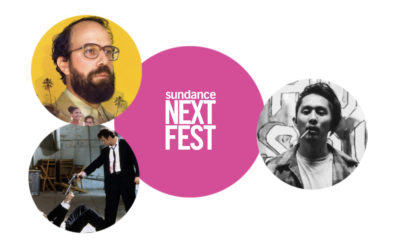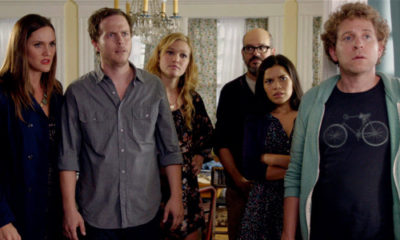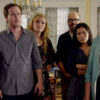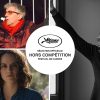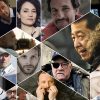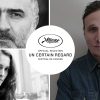Retro IONCINEMA.com
Aaron Katz
We wanted to be very precise in how we shot the suspense scenes, but we also wanted the film to feel lose and natural. Finding that balance was one of our biggest challenges and I’m really proud of the approach that Andrew Reed, our director of photography, and I arrived at.
IONCINEMA.com’s “IONCINEPHILE of the Month” puts the spotlight on an emerging filmmaker from the world of cinema, and while I personally feel this month’s selected filmmaker doesn’t need much of an introduction as he has been a part of the SXSW circulum with three films now including Dance Party USA in 2006 and Quiet City in 2007), and is often cited as one of the fathers of the mumblecore movement. This month we present Aaron Katz and his third feature film Cold Weather, which will be making the rounds via IFC Films who released the film in NYC last weekend, and will launch it in Los Angeles February 11th (tomorrow). Here’s Aaron’s Top 10 Favorite Films of All Time List as of February 2011.
Eric Lavallee: During your childhood…what films were important to you?
Aaron Katz: When I was really young my grandmother took me to see Snow White in the theater and it terrified me. Shortly thereafter I saw a little bit of The Wizard of Oz on TV, which also terrified me. The result was that I wasn’t at all interested in movies until I was 8 or 9. Around that time my family got a VCR. The first movies I remember watching and liking were things my dad got from the library, mostly old comedies. To this day I’m positive that I’ve seen A Night at the Opera more than any other film. I’ve seen it maybe 30 or 40 times. I think you could play it on mute and recite almost every line. I think it starts with Margaret Dumont telling a waiter to page Groucho and Groucho says, “Stop yelling my name all over this restaurant, do I go around yelling your name?”
Lavallee: During your formative years what films and filmmakers inspired you?
Katz: Well, as mentioned above, I loved the Marx Brothers. I also loved Buster Keaton and Charlie Chaplin. In late middle school I started watching a lot of film noir and I discovered Kurosawa and French new wave. I also listened to a lot old radio shows. The library had these giant 20 tape collections of things like Gunsmoke and Dragnet and The Shadow. I loved those.
Lavallee: At what point did you know you wanted to become a filmmaker?
Katz: In early high school I started making super 8 films with my friends, but I thought that I wanted to be an actor. I remember in my senior year of high school I had a conversation with the theater teacher about what I should go to college for. I had started to think that I wanted to go for film, but I wasn’t sure. That was the conversation when I decided that I wanted to make movies.
Lavallee: You’re obviously very familiar with the film’s backdrop. When and how did you first conceive the idea for a Portland-set mystery film?
Katz: It started out as a story about a brother and sister and the mystery elements came in after about 30 pages of writing. Once the idea of genre world started to gain momentum the movie’s setting made a lot of sense. Thinking about shooting it in Portland got me really excited because I love the city so much and, not living there now, I really miss it. Portland is such a beautiful city and it has a natural feeling of mystery. The architecture is similar to Los Angeles in a lot of ways, but it rains all the time so it’s perfect for a story like Cold Weather.

Lavallee: What kind of characteristics/features were you looking for in Cris and Trieste’s characters?
Katz: I wrote the parts they play with them in mind. I wanted them to be the kind of brother and sister who hadn’t necessarily been close recently, but who mostly liked each other. For me the kind of relationships that resonate the most are quiet ones where what’s not said is as important as what is said.
Lavallee: What ideas did you have for the style of the film? What inspirations did you draw upon for the look/style, aesthetics of the film? And could you briefly discuss your experience with working with the RED camera – was it well suited for a drizzle-friendly Oregon?
Katz: We wanted to be very precise in how we shot the suspense scenes, but we also wanted the film to feel lose and natural. Finding that balance was one of our biggest challenges and I’m really proud of the approach that Andrew Reed, our director of photography, and I arrived at. A lot of it had to do with lighting. We tried to set up lighting situations that allowed the actors to move freely without worrying about marks or stepping half a foot in the wrong direction and winding up in a lighting dead zone.
I loved shooting on the RED. The degree of control we had over the look of the film was so much more than in the past.
The ability to choose any 35mm film lens was great. Mostly we used a set of Zeiss primes, but we also had a very rugged 20-60 zoom (a Cook I believe) and a beautiful 25-250 zoom (we were only able to afford that last one for a couple days). In post production we also had a huge amount of control. Color is really important in Cold Weather. With that in mind Reed and I started working with our colorist Alex Bickel even before starting to shoot. We spent a lot of time discussing things like how to shoot in a way that allowed us to heighten the texture of the clouds and how to make the blacks rich and wet looking. In post-production we must have spent close to a hundred hours in the room with Alex meticulously working on every shot to perfect the look. That kind of control just wasn’t possible on our previous films and having it was very satisfying.
Lavallee: Can you discuss the collaborative process you had with your 1st AC?
Katz: I’ve talked a lot in other interviews about the process with the actors, producers, and our director of photography who are, of course, key collaborators. Very infrequently have I had the chance to discuss our 1st AC Jeff Taylor. Needless to say, on a bigger film there’s a huge camera department, but on our film the camera department consisted of director of photography Andrew Reed (who also operated) and 1st AC/2nd AC/everything else Jeff Taylor. Anyone making low budget films will tell you that some of the most difficult people to find are strong technicians who also feel like part of the collaborative team. I mentioned earlier that lighting was key to making the actors feel comfortable in a movie with some fairly formal aesthetic elements. Also key was trusting Jeff. This meant that we could be in low light on our 85mm lens, which resulted in a very shallow depth of field, and know that the actors could move around in a natural way that might change from take to take. There was no need to ask if Jeff had hit focus marks, we just knew he did. Another place where Jeff was essential was when Reed and I would run into a camera placement question, say with crossing the so-called “line” (essentially the side on which you’re shooting two or more actors, film students everywhere will recognize this as an exhaustively covered topic), we knew we could always counsel with Jeff and iron things out in a minute or two. Finally, when you have only ten or so crew members, everyone’s contribution to the feeling on set is magnified and I can’t say enough about how much Jeff added to the dynamic. All of this might sound pretty elementary, but on low budget films these things are not automatic and they make the a huge difference in the quality of your footage.
Lavallee: Can you discuss the collaborative process you had with your colorist?
Katz: Earlier I talked about Alex Bickel while discussing the RED, but he’s another person whose immeasurable contribution (as our colorist and post-production advise) has not been talked about much. Once we knew what camera we were shooting on Reed and I immediately got in touch with Alex, who at that point had already worked on several commercials shot on the RED. One thing we discussed was how we wanted to have a lot of control during the color correction process over the look of the skies. That meant that even in scenes where some action took place in the shadows it was vital not to let any part of the sky blow out. If you look for it, even in mainstream Hollywood movies, you’ll notice the sky often blows out to white, which reads totally normal to the viewer. For us though the weather plays such an important role in the feel of the movie that if we lost the information in the sky we wouldn’t be able to make the film look like we wanted. With that in mind we were always aware of the light reading we were getting on the sky and Alex was able to exert complete control over how the clouds look in every shot. Deciding to prioritize that early on is just one example of why it’s so important, especially when you don’t have a lot of financial resources, to include people in the collaboration early.
Lavallee: Can you discuss the collaborative process you had with supporting actors?
Katz: One of the most important things to me is for it to feel like life continues beyond the edge of the screen or the running time of the movie. I want characters who are only onscreen for only a short time not to feel like they’re there only to deliver their few lines and fulfill whatever the needs of the plot are at that moment. I think Paul Thomas Anderson does a great job with this. In his movies even people on the telephone give great performances.
As much as was possible we cast people in smaller parts to play versions of themselves. The ice factory boss in the movie is the guy who owned the ice factory we were shooting at. The guy at the tobacco store was a real guy who worked at the pipe shop. The parents at the beginning are a real couple, the parents of one of our crew members. In all these cases we didn’t give the actors a script we just told them the situation. The ice factory boss for example just interviewed Cris the way he would interview any applicant.
IFC Films released Cold Weather in NYC on February 4th, and in Los Angeles on February 11th.



